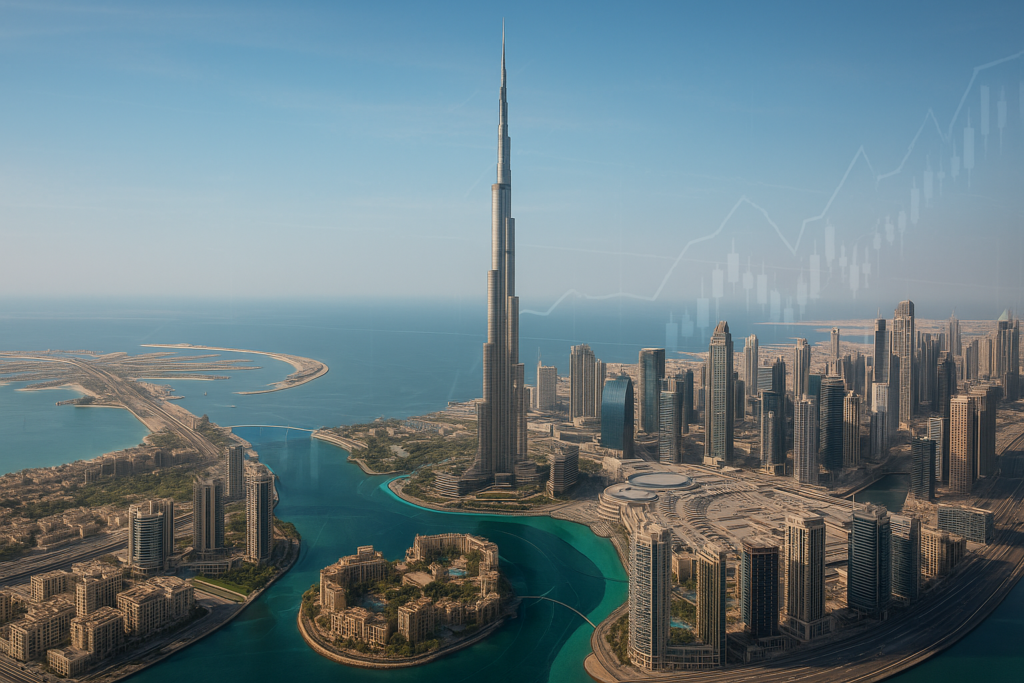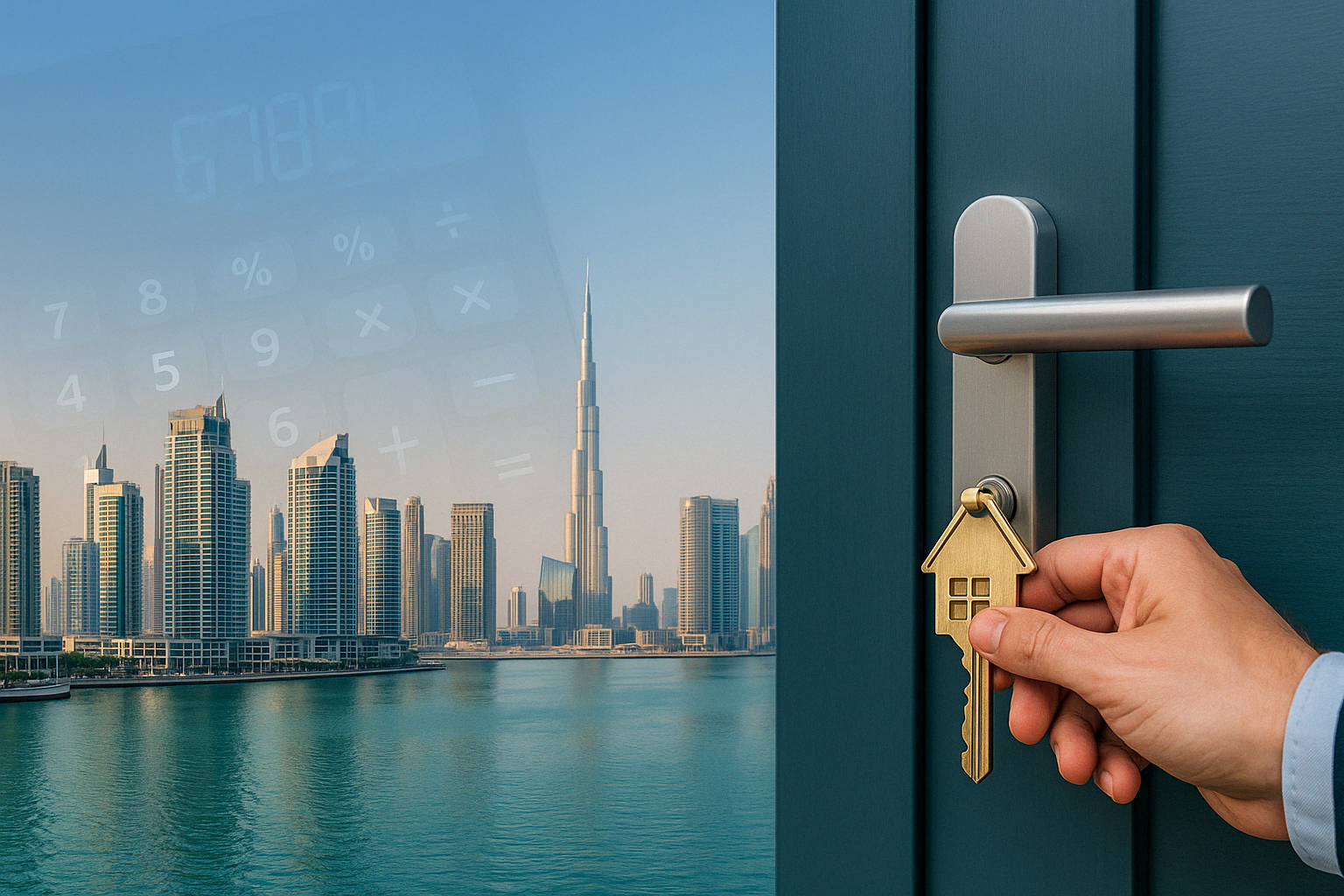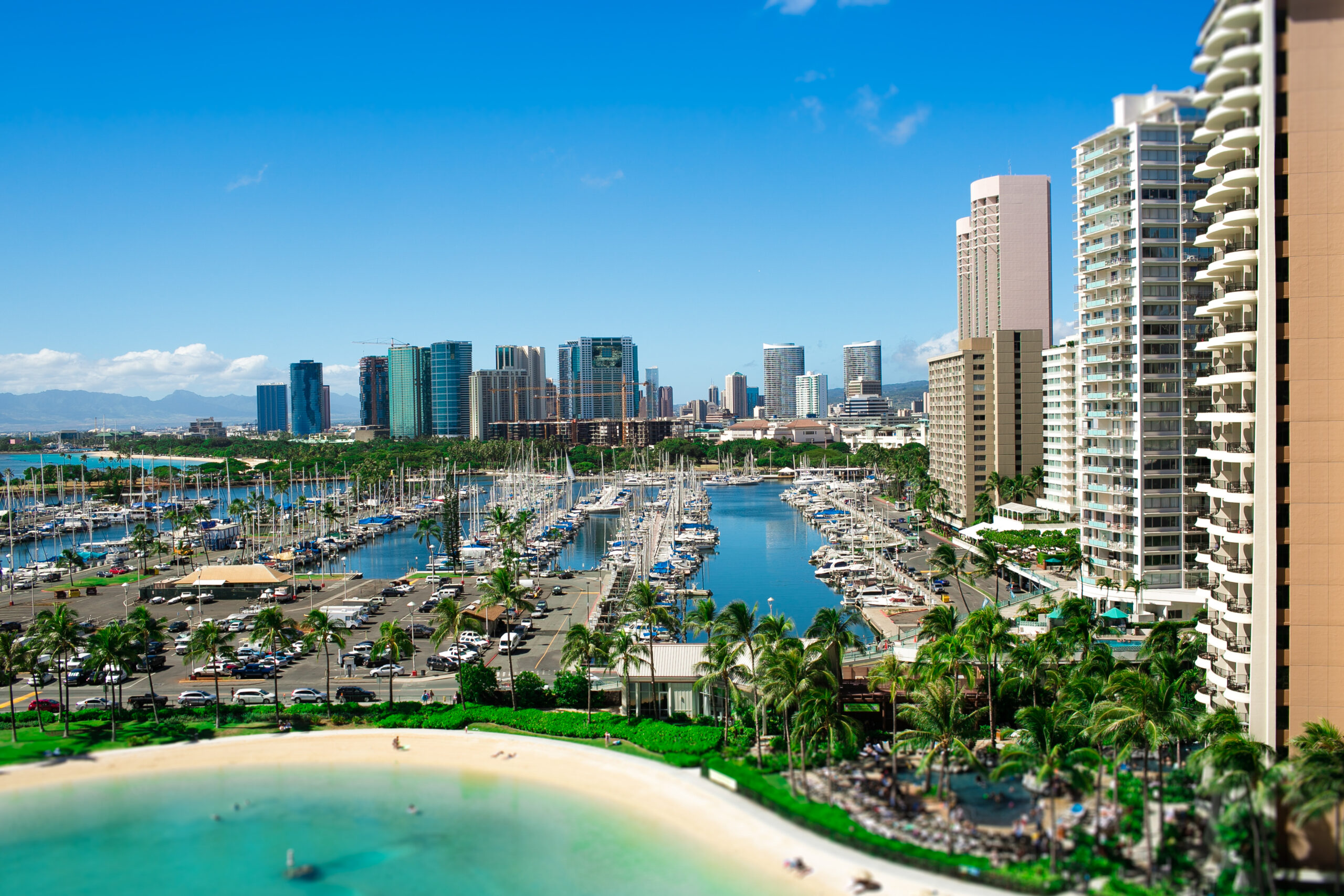Can you buy a property in any part of Dubai and see some returns? Probably. You’ve likely heard at least one success story that started with little more than a hunch.
But as new towers spring up and overlooked neighborhoods gain traction, you might wonder if sticking to the old favourites could mean missing out on even better profits.
But since your goal is to maximize ROI, it’s worth giving extra thought to places that consistently show steady rental demand and room for growth.
We dove into the data to give you a comprehensive breakdown of top investment locations in Dubai – with Mena Homes property search tools on your side to help you compare prices, weigh up pros and cons, and connect with the right agents to make those numbers work in your favor.
Why Dubai is a Top Real Estate Investment Destination
Strong Economic Growth and Global Interest
If you’re wondering whether Dubai’s real estate boom still has room to run, major consultancies such as Knight Frank predict average price growth of around 5%, and that’s after four continuous years of steady climbs.
One big reason is that Dubai keeps pulling in buyers from all over the world, including high-net-worth individuals looking for stable business conditions and lower taxes. Political uncertainties elsewhere also nudge more people to move their assets here. This creates ongoing demand for both short-term rentals and long-term housing.
High Rental Yields and Price Appreciation
Plenty of neighborhoods in Dubai see rental returns in the 6–8% range each year for apartments. Villas tend to yield a bit less (4–6%), but they can jump in resale value if the community attracts more families or gets a new school or mall.
There is concern about oversupply since developers launched over 100,000 new units in 2024 alone. But a record 4,300 mortgages were also issued in a single recent month, suggesting end-users, not just speculators, are absorbing much of this inventory.
Freehold Ownership for Foreign Buyers
In Dubai’s freehold zones, you own your property outright. The Dubai Land Department tracks each sale and issues a formal title deed, so you can verify ownership at any time.
That extra peace of mind is often what pushes overseas buyers to pick Dubai over other global cities with more complicated regulations.
World-Class Infrastructure and Lifestyle
The city invests heavily in new roads, metro lines, and lifestyle destinations. Property owners who bought close to a new metro extension have sometimes seen quicker bumps in both rent and resale value because easy transport is a big draw for tenants.
Dubai also has a well-established approach to digitizing property transactions, meaning you can track official records more easily than in many other countries.
Meanwhile, initiatives such as the Dubai 2040 Urban Master Plan placed emphasis on more green spaces and balanced development, factors that can help keep property values growing at a sustainable pace.
Top Areas for Real Estate Investment in Dubai
Downtown Dubai
Downtown Dubai is a flagship development by Emaar that’s said to have cost over 20 billion dollars. Aside from luxury apartments, there are office spaces, hotels, entertainment venues, and, of course, the world-famous Burj Khalifa.
All of this fits into roughly two square kilometers, meaning everything is tightly packed and walkable, which can be a huge plus if you like the idea of a neighborhood that feels a bit like a mini city.
Rental Yields
- Studios and 1-bedrooms generally – around 6%.
- 2- or 3-bedroom units – closer to 6%
If someone tells you they can get you 10% net yields here, you’ll want to question that. The area is luxurious, but also more expensive to maintain, so realistically you’re looking at mid-range returns. However, those returns tend to be steady because people from all over the world want to live in or visit Downtown.
Transaction Data
Downtown Dubai has consistently high sales volumes, tens of thousands of apartments have changed hands over the years, and the average price per square foot is around AED 2,600 (2023 data). It’s been relatively stable for about a decade, with a dip in 2020 (reaching around AED 1,900 per sq ft) followed by a strong recovery.
This tells you two things:
- Demand is real: Even if prices dip, the area bounces back quickly because it’s so central and iconic.
- Competition is high: With all that buying and selling, you need to be smart about which building (and view) you choose.
Rental Trends
Downtown attracts a few main groups of tenants:
- Professionals working in DIFC, Business Bay, or on Sheikh Zayed Road who want a short commute.
- Tourists and short-term visitors—the Dubai Mall alone bring in millions of people every year.
- Long-term residents (often expats) who love being in the heart of the city.
Because of this variety, occupancy rates stay pretty healthy year-round, especially for those smaller units. Just keep in mind that the traffic and noise levels can go up during big events (like New Year’s Eve), so some tenants might prefer slightly quieter parts of town.
Infrastructure & Development
While Downtown is largely “complete” compared to newer areas, you’ll still see occasional construction for new towers or expansions to existing facilities.
If you’re worried about traffic, the neighborhood does have a metro station (connected to The Dubai Mall), and the roads are well-connected, though they do get busy at peak times.
Another point: Downtown’s location is practically unbeatable if you’re flying in and out of Dubai a lot. The airport is just a short drive away, and you’re right next to major commercial districts like DIFC. That’s why so many business travelers choose to stay here.
Amenities
- Dubai Mall (shopping, dining, aquarium, ice rink, cinema)
- Burj Khalifa and the Dubai Fountain (top tourist draws)
- Dubai Opera (concerts, theater, cultural events)
- High-End Hotels like The Address, Vida, and Armani
- Boulevard Walks lined with cafes and restaurants
- Plenty of Public Transport (metro and feeder buses)
Dubai Marina

Dubai Marina is actually one of the city’s older waterfront developments. It’s been around since the early 2000s, but it’s still a crowd favorite for tourists, expats, and investors.
It’s a long, curved canal lined with high-rise towers, each offering their own cafes, gyms, and quirky little shops at ground level. You’ve got yachts cruising by, a steady buzz of people jogging or strolling along the promenade, and a mall right in the middle (Dubai Marina Mall) to top it all off.
Rental Yields
The Marina is a high ROI area for short-term rentals. Think Airbnb, holiday lets, monthly stays, anyone who’s in Dubai for work, tourism, or a quick holiday often wants to be right by the water with easy access to the beach.
- Studios and one-bedrooms – around 6.50%; depending on the building, the view, and how well you furnish or renovate it.
- Two- or three-bedroom units – around 5% or a bit less. Still, with a constant flow of tourists and business travelers, demand tends to stay fairly steady all year round.
A smart move would be to choose the right building and ensure your unit actually faces the marina, because that’s what most short-term renters are after.
Transaction Data
Dubai Marina has seen strong sales activity for years, partly because it’s so well-known globally. You might see a wide range of prices per square foot, from some older, more affordable towers to ultra-luxury developments recently launched by top names like Emaar or Ellington.
Older buildings can sometimes offer a “deal,” but keep in mind that they may need renovation or come with higher maintenance needs.
Newer launches, meanwhile, come with a hefty price tag. A lot of that cost is about location (prime waterfront plots) and the fact that everyone wants a piece of the iconic marina skyline.
Rental Trends
Because Marina appeals to such a broad crowd, tourists, short-term corporate renters, students from Knowledge Village nearby, and even families, it stays active all year.
The busiest season is typically the cooler months (October to April), when tourism peaks. Even in the hotter months, you’ll find people booking short-term rentals because the marina vibe is just that appealing.
Long-term rentals also do pretty well, although many landlords choose to go short-term for higher monthly returns. The only downside is that competition is fierce.
Plenty of investors have the same idea, so you’ll want to make sure your property stands out (renovated interiors, good management, a clear marina view, etc.).
Infrastructure & Development
One of Dubai Marina’s biggest appeal is how walkable it is compared to other parts of Dubai. The promenade wraps around the entire canal, so you can stroll to a restaurant, a coffee shop, or even a boat tour. There’s also a tram and two metro stations on the outskirts of the district, which make it easier to get around without a car, though many people do own one anyway.
That said, traffic can be intense near JBR and along major exits. If you value a quick escape from the hustle, you might prefer a tower closer to the metro or on the marina side that has easier access to Sheikh Zayed Road. Also, don’t be surprised to see new towers popping up in what seems like already full blocks. Developers keep finding empty plots to squeeze in a few more high-rises.
Amenities
- Marina Walk: Perfect for jogging, cycling, or just people-watching.
- Marina Mall: A decent-sized mall with a cinema, supermarket, and plenty of shops and restaurants.
- Beach Proximity: JBR beach is within walking distance from many towers, giving you easy access to the sand and sea.
- Water Sports & Yachts: If you love being on the water, the marina offers everything from yacht charters to paddleboarding.
- Nightlife: Bars, clubs, and rooftop lounges abound, especially near the 5-star hotels.
Palm Jumeirah
Palm Jumeirah is one of Dubai’s most talked-about waterfront destinations, recognized for its distinctive palm-tree shape stretching out into the Arabian Gulf. Even though it launched back in the early 2000s, it still attracts a mix of tourists, high-earning expats, and real estate investors from around the world.
Picture a main “trunk” lined with hotels, shops, and apartments, plus the crescent that hosts some of the city’s most luxurious resorts, like Atlantis, and the fronds filled with beachfront villas. If you love the idea of a resort-style neighborhood with a private beach at your doorstep, the Palm might be exactly what you’re looking for.
Rental Yields
Most investors looking for consistent returns tend to focus on short-term rentals, given how popular the Palm is with travelers.
- Studios and one-bedrooms on the trunk can yield around 5% to 7% annually, especially if they have a decent view or direct beach access.
- Villas on the fronds usually bring in slightly lower percentages, around 4% to 5%, because they’re at the top end of the price range.
That said, if you’re okay with more capital tied up, these properties can attract families or high-end tourists willing to pay higher rates for a private beach.
Transaction Data
Palm Jumeirah’s sales history is dotted with some of Dubai’s highest-value deals, including multi-million-dirham villa transactions. Prices per square foot vary widely depending on whether you’re on the trunk, the fronds, or the crescent.
Some older developments are less expensive upfront but may need significant renovation to match modern standards. Meanwhile, new or branded projects often come with steeper price tags, reflecting both their location and the global appeal of the Palm.
Rental Trends
Short-term holiday rentals are particularly strong here, mostly because many visitors want the full “Palm experience” for a week or two. Even during off-peak months, you’ll find consistent demand from business travelers or families who prefer a resort-like setting.
For long-term rentals, the Palm attracts affluent tenants, often senior executives or families willing to pay a premium for private beaches and top-tier facilities. Keep in mind that competition in the short-term market can be fierce, so property upkeep and standout interior design can make all the difference.
Infrastructure & Development
Palm Jumeirah is split into three main zones: the trunk, the fronds, and the crescent. The trunk is relatively easy to navigate and has a monorail that takes you out to Atlantis on the crescent.
The fronds are gated residential areas with villas, each enjoying its own beachfront. Weekend traffic can pile up around popular hotel spots, but recent road improvements and a well-placed tunnel have helped ease some congestion.
You might still see new projects popping up on remaining plots, and older buildings sometimes undergo refurbishments to stay competitive.
Amenities
Palm Jumeirah feels like one large five-star resort in many ways:
- Beaches: Most villas have private beachfronts, and many apartments on the trunk also offer sand-and-sea access.
- Nakheel Mall & Golden Mile: Handy for grocery shopping, dining, and a spot of retail therapy without leaving the island.
- Restaurants & Hotels: Some of Dubai’s most luxurious resorts and celebrity-chef restaurants are dotted around the crescent.
- Water Activities: Yacht charters, paddleboarding, jet-skiing, you’re never short of ways to enjoy the water.
Find Your Ideal Investment in Palm Jumeirah!
Jumeirah Village Circle (JVC)
JVC has been in the spotlight for years, mostly because it offers what many investors see as the sweet spot: decent pricing, good potential for rental returns, and a central location. In simple terms, you don’t have to pay Downtown or Marina prices to still tap into Dubai’s property market.
Rental Yields
Investors often flock to JVC because rental yields can go anywhere from 6% to 12%, especially when we’re talking about short-term holiday lets. Studios, in particular, are a hot ticket item.
They’re cheaper to buy, and they fill up quickly because a lot of singles, couples, and short-stay visitors are looking for affordable but conveniently located places.
Two and three bedroom apartments bring in percentages in the 6-7% range.
Transaction Volumes
JVC has seen thousands of off-plan sales, consistently outpacing some of Dubai’s more iconic neighborhoods. That means a couple of things for you as an investor:
- Strong Market Interest: A high number of transactions generally indicates good liquidity. If you ever want to sell, you might find buyers faster than in lower-demand areas.
- Supply Caution: Large transaction volumes also mean plenty of new units are in the pipeline. More supply can put pressure on both rental rates and resale prices if demand doesn’t keep up.
Infrastructure and Development
JVC is still under development, with new buildings going up almost monthly. That can be both exciting (new roads, fresh malls, fresh units) and a bit of a headache (traffic, construction noise, and yes, the possibility of oversupply).
It’s why the government and private developers are working on solutions, like widening Hessa Street and upgrading Al Khail Road.
Those projects could massively improve the daily commute, and there’s talk of potential Metro extensions in the future. If you buy now, you might benefit once those upgrades are complete.
Amenities
- Parks and Green Spaces: Families love the playgrounds; fitness enthusiasts dig the jogging paths.
- Circle Mall: Handy for groceries, coffee stops, and last-minute shopping.
- Schools: JSS International School is a big draw for parents, and there are plenty of nurseries for younger kids.
- Community Vibe: Gyms, salons, little eateries—it’s a mini city within a city.
Business Bay
Business Bay is often described as the “Manhattan of Dubai,” packed with gleaming high-rises along the Dubai Canal, all just minutes from Downtown and the Burj Khalifa.
It was initially envisioned as a pure commercial area, but over the years, it has morphed into a mix of offices, residential towers, hotels, and a steadily expanding scene of cafés and restaurants.
That said, you’ll notice plenty of ongoing construction, and weekend traffic can get congested, especially around the canal bridges. But if you want to be close to Downtown without paying Downtown prices, you can’t ignore Business Bay’s appeal.
Rental Yields
Many investors see Business Bay as a strong option for both short-term holiday lets and longer monthly stays.
- Studios and one-bedroom apartments can generate 5% to 7% annual returns, particularly if they’re near the metro or have a decent canal view.
- Larger units, like two or three bedrooms, might yield a bit less, around 4% to 5%.
Still, the area’s proximity to major business centers, along with easy access to shopping and dining, helps keep rental demand steady.
Transaction Data
Business Bay has consistently been a top performer in Dubai’s property market, often ranking just behind Dubai Marina in terms of the number of sales. You’ll find a wide range of prices here, largely dependent on building age, developer reputation, and how close you are to the water.
Newer luxury projects, including some branded residences, command a premium, while older towers may offer lower entry points, but could require additional renovation or upgrades.
Rental Trends
Short-term rentals see a healthy flow of business travelers and tourists who want to stay near Downtown without paying full Downtown rates.
Meanwhile, monthly or long-term leases attract professionals working in Business Bay itself or DIFC (Dubai International Financial Centre), thanks to easy commutes and a growing lineup of neighborhood amenities.
That said, competition is fierce, so if you’re aiming for short-term lets, consider doing a high-quality fit-out or marketing strategy that’ll help your property stand out.
Infrastructure & Development
A huge advantage of Business Bay is connectivity. It’s bordered by two major highways—Sheikh Zayed Road and Al Khail Road—and has a dedicated metro station. The Dubai Canal adds some scenic charm, featuring a waterfront promenade that’s become popular with joggers and cyclists, though it’s still developing in places.
Traffic can back up during rush hours, and if you’re biking or walking, be aware that certain bridges are spaced far apart. That said, improvements to road networks and more pedestrian-friendly initiatives are slowly making Business Bay easier to get around.
Amenities
- Dining & Nightlife: A growing range of restaurants, cafés, and lounges, plus easy reach to Downtown’s nightlife scene.
- Hotels: Business Bay is home to several five-star brands (including JW Marriott Marquis, one of the world’s tallest hotels).
- Retail & Services: Supermarkets, gyms, and local shops are scattered throughout, with Dubai Mall just a short drive or metro ride away.
- Outdoor Spaces: The canal walkway offers a scenic route for runners, cyclists, or anyone looking to relax by the water.
Al Barari
Al Barari is often called the “Green Heart” of Dubai, primarily because the community has a mix of lush gardens, freshwater streams, and large homes that you won’t find in most parts of the city.
Most developments in Dubai are more focused high-rises or tightly packed villas, but Al Barari feels more like a botanical retreat. This might be ideal if you’re gravitating towards an eco-friendly area in the high-end property zone. Prices aren’t low, but buyers see this as a niche that holds strong value over time.
Rental Yields
- Some four- to six-bedroom villas here can reach annual returns of about 8.5%, which is surprisingly solid for the luxury segment.
- Apartments and smaller units usually land in the 6% to 7% range.
Rents are high partly because tenants want large floor plans, landscaping, and a private atmosphere that’s hard to match elsewhere in Dubai. This demand keeps both returns and property values steady.
Transaction Data
In both October and November 2024, each recorded six property transfers. In October, the highest transaction was a 4-bedroom villa in The Nest, sold for AED 65 million, while the lowest was a 5-bedroom villa in Chorisia Villas 1, sold for AED 11.7 million. The average sales price during this month was approximately AED 25.98 million, with an average price per square foot of AED 3,547.
In November, the highest recorded sale was a 5-bedroom villa in The Nest at AED 65 million, and the lowest was a 5-bedroom villa in Chorisia Villas 2, sold for AED 13.75 million. The average sales price increased to about AED 28.51 million, with an average price per square foot of AED 2,851.
Rental Trends
Families and long-term renters are the norm here. Many people who move in end up staying for years, drawn by the quiet streets and large private gardens.
Rental range for different property types is as follows:
- Villas: from AED 800,000 to AED 2,400,000 annually
- Studio Apartments: annual prices starting at around AED 100,000
- One-Bedroom Apartments: annual rents ranging from AED 110,000 to AED 195,000
- Two-Bedroom Apartments: from AED 200,000 to AED 300,000 annual
The average rental price for residential properties in Al Barari is approximately AED 409,906 per year, based on transactional data from the past 12 months.
Short-term rentals exist, but this area leans heavily toward year-long leases or more.
Infrastructure & Development
Al Barari sits in Dubailand, about 15–20 minutes from key spots like Downtown or Dubai Marina. Residents depend on cars, because public transport isn’t strong in this neighborhood.
The nearest Metro station is around a 20-minute drive. Access to major roads is decent, though traffic can build up at peak times. Some expansions are in the pipeline, but for now, driving remains the main way in and out.
Amenities
- The Farm: Popular for organic meals in a natural setting.
- Body Language: A gym that offers personal training and group classes.
- Heart & Soul: A spa focused on relaxation.
Factors to Consider When Choosing an Investment Area
Rental Yield vs. Capital Appreciation
Ask yourself: “Do I want a consistent monthly payout, or am I aiming for a bigger resale profit down the road?” If you’d like a healthy rental income right away, top investment locations such as Jumeirah Village Circle (JVC) or Business Bay often deliver net yields around 6–8% for apartments.
If you can live with a slightly lower yield to potentially snag a bigger long-term gain, look at upscale spots such as Downtown Dubai, Dubai Hills Estate, or Al Barari.
Data from 2024 shows that premium segments often see yearly price rises in the double digits, especially when they’re near new roads, retail centers, or other high-profile developments.
Not sure where to start? Check out this guide on how to invest in Dubai to make informed decisions and maximize your returns.
Property Types: Apartments, Villas, or Commercial?
- Apartments: Good for first-time investors, especially if they’re near metro stations or close to major job hubs. Short-term rentals (like Airbnbs) can push rental yields in Dubai higher but require active management.
- Villas: More expensive upfront, but they generally attract families who stay for years. You might see 4–6% annual rental returns, with room for bigger sales gains if the area gets more schools, green spaces, or commercial centers.
- Commercial Units: Offices or retail shops can sometimes offer 7–10% returns, but watch out for longer vacancy periods if the market cools or a newer business district opens.
Market Trends and Future Development
Dubai has seen 48 consecutive months of property price growth since late 2020, driven by end-users taking out mortgages for 25 or 30 years and fewer “flip-and-run” speculators than in the 2008 cycle.
However, supply is also expanding. Over 100,000 new units launched in 2024 alone. That might sound scary, but the consistent rise in mortgage approvals suggests actual homeowners are stepping in, which points toward more stable demand.
Proximity to Transport, Schools, and Business Hubs
End-users and tenants care about convenience. Apartments close to the metro in areas like Business Bay or Downtown keep vacancy rates low. Families with young kids often choose villa communities like Arabian Ranches or Dubai Hills Estate, where top schools and clinics are just a short drive away.
The bottom line is, a location with good infrastructure and daily conveniences will save you headaches if you plan to rent out or resell later.
How to Get Started With Property Investment in Dubai
Researching Market Trends and Forecasts
Official Data: The Dubai Land Department publishes transaction details, price trends, and legal guidelines. You’ll see how many deals happened in a certain neighborhood, plus median prices that show whether values are rising or stagnating.
Mena Homes Property Search: Mena Homes let you filter your search by price, location, and property type. Check out listed rents versus sale prices to gauge potential returns, but also note if there are many similar properties, oversupply can push down both rents and resale prices.
(CTA)Start exploring listings and see where the best opportunities are waiting.
Budgeting and Securing Financing
- Down Payment and Rates: Most non-residents can borrow 50–60% of a property’s price, but strong applicants might get 70%. Interest rates usually hover around 3.5–5.5%.
- Look at Total Costs: Besides a 4% transfer fee at the Land Department, budget for about 2% in agent commission (unless you’re buying directly from a developer off-plan), plus any bank or conveyancing fees.
- Leverage Gains: Because UAE mortgage rates are often lower than in the U.S. or Europe, you might see bigger returns on your equity if the property appreciates.
Not sure how different loan options will impact your budget? Try Mena Homes Mortgage Calculator! Just plug in the property price, your down payment, interest rate, and loan term to instantly see what your monthly payments could look like.
You can compare different scenarios, like a 15-year vs. 20-year loan or a slightly higher down payment, to find the smartest financing option for your Dubai real estate investment.
Working With Licensed Real Estate Agents
Partnering with the right agent can save you from costly missteps, such as buying in a location that’s oversupplied or missing vital infrastructure.
Mena Homes connects you with top real estate agents in Dubai who live and breathe Dubai’s real estate trends. They track actual sales, not just asking prices, and can show you how certain buildings or villa communities have performed over the last 5 or 10 years.
(CTA )Interested in a more guided approach? Contact Mena Homes for a free consultation. Our network of trusted agents can walk you through realistic projections, help you spot the best property investment in Dubai,, and ensure your contract is watertight.
Legal Requirements and Freehold Property Laws
Dubai allows foreigners to own freehold properties in certain zones—no local sponsor needed. Once you agree on a price, you sign an MOU and place a deposit (often 10%) to lock in the deal.
Everything then goes to the Dubai Land Department, which officially registers you as the new owner. If you’re planning short-term rentals (like Airbnbs), you’ll need a holiday home permit from the Department of Economy and Tourism. Staying within these guidelines avoids legal hassles later on.
Start Your Property Investment in Dubai Today
We’ve covered the big questions—why Dubai draws investors from all over the world, how to choose an area based on rental yields or capital gains, what kinds of properties might fit your strategy, and how to secure financing without losing sleep.
Keep these key points in mind:
- Figure out if you want quick rental income or a larger resale payoff later.
- Match your property type—apartment, villa, or commercial—to your budget and risk level.
- Look for new metro lines, malls, or other catalysts that can drive up demand.
- Choose your agents and advisors carefully so you’re not battling misinformation or hidden fees.
Ready to take the next step? Explore Mena Homes’ listings or get in touch with our licensed agents for data-driven insights and personalized recommendations. With the right research and guidance, investing in Dubai real estate can be a rewarding move for your portfolio.









